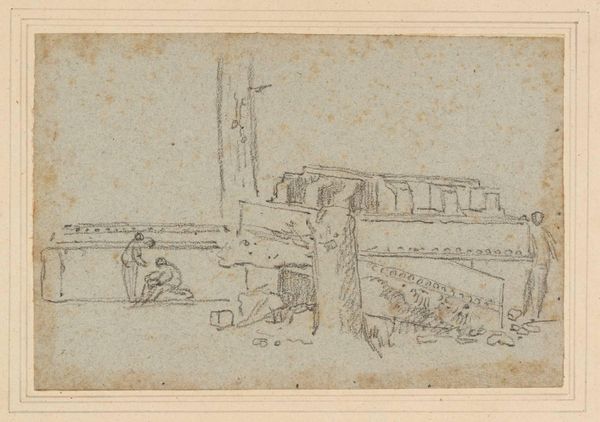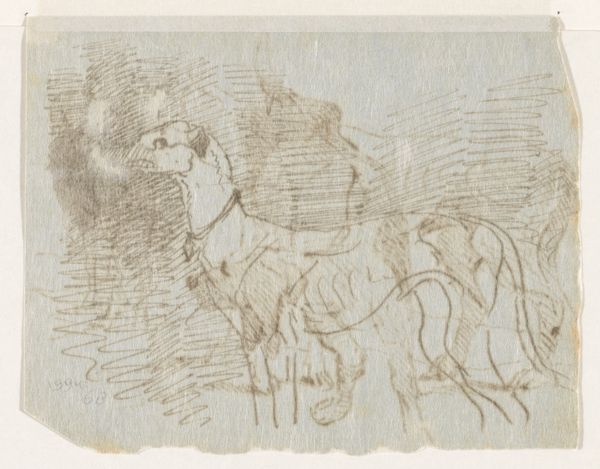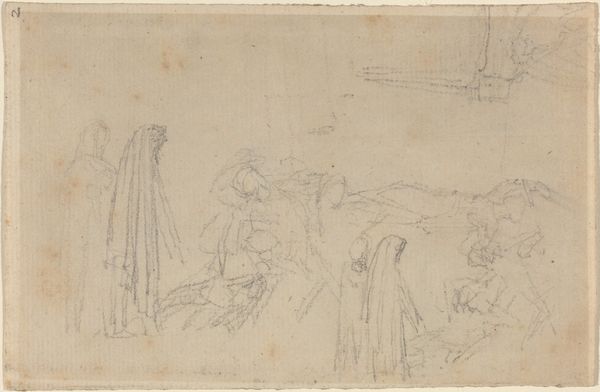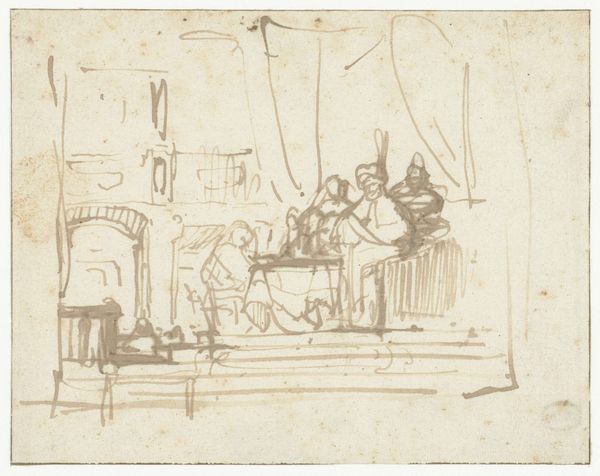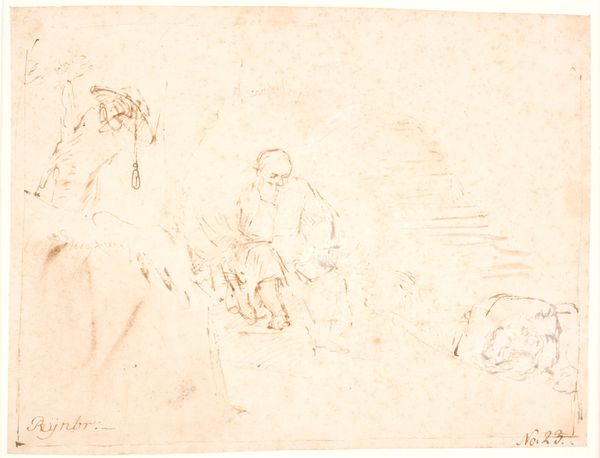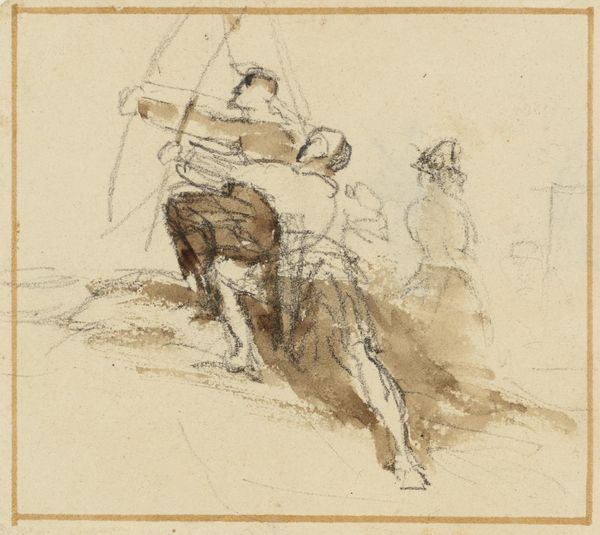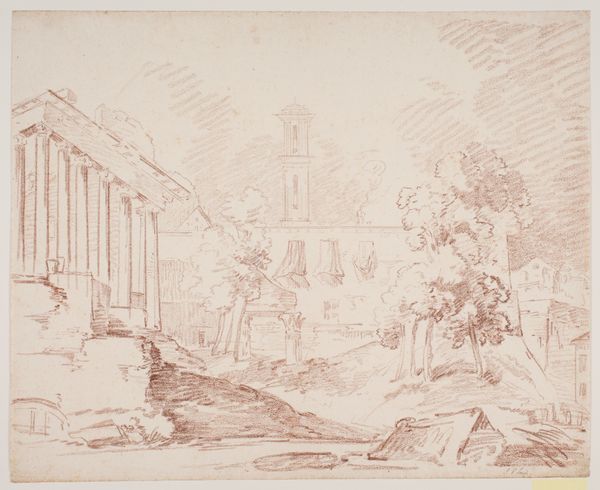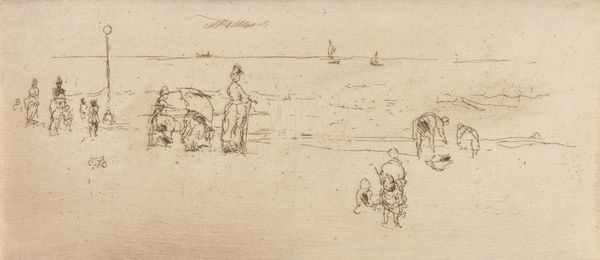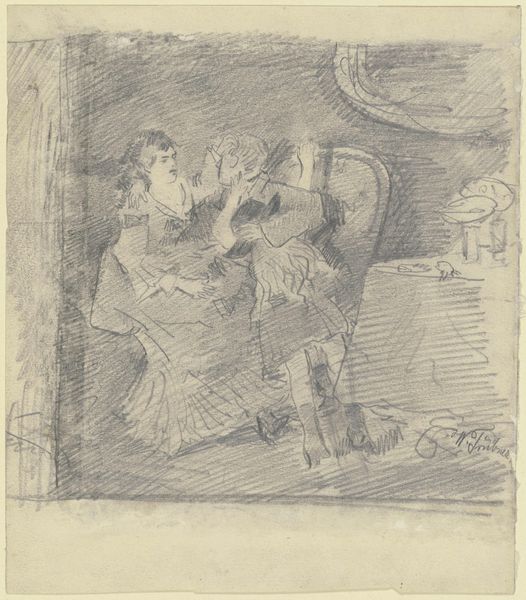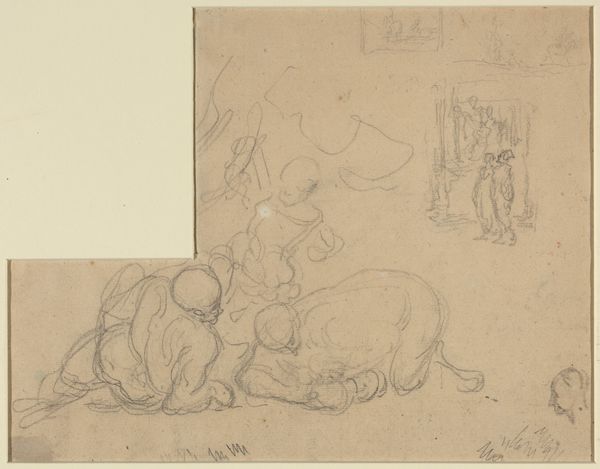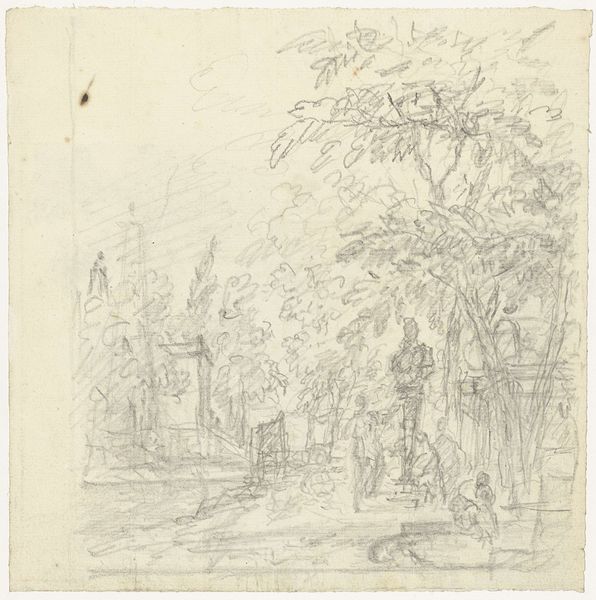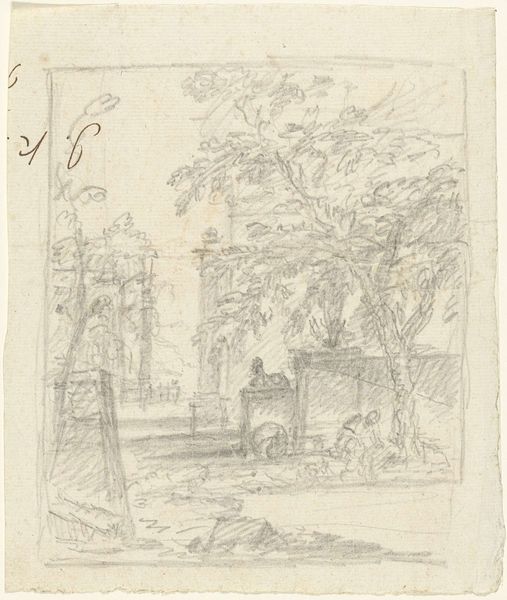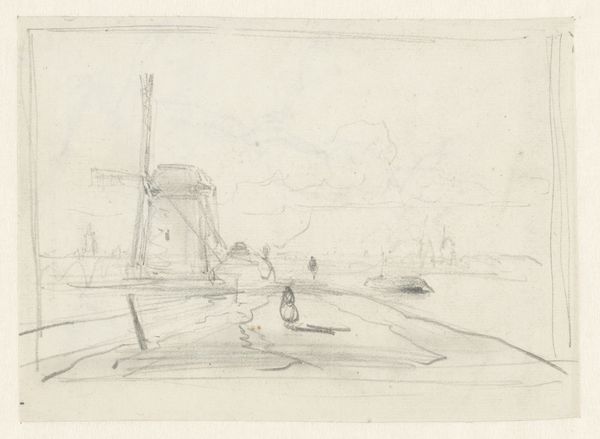
drawing, paper, ink
#
drawing
#
narrative-art
#
baroque
#
etching
#
figuration
#
paper
#
ink
#
genre-painting
#
history-painting
Dimensions: height 82 mm, width 84 mm
Copyright: Rijks Museum: Open Domain
Curator: Look at the frantic energy in Moses ter Borch's drawing, "Joseph and Potiphar's Wife," made around 1656 or 1657. It's rendered in ink on paper and held at the Rijksmuseum. Editor: The hurried, almost scratch-like marks are fascinating. There's such immediacy to the fleeing figure; I can almost feel the slippery resistance of the paper under Ter Borch's hand, as he raced to get it down. It's like a cartoon, reduced to essentials. Curator: Ter Borch's use of line seems to tap into the collective understanding of the biblical narrative; the gestures of the characters become shorthand for a well-known drama. The architectural forms looming behind seem less real structure and more emblematic backdrops of constraint and perhaps entrapment. Editor: It certainly directs your eye to the forms. And note the level of contrast in that detail as it appears further back on the z-axis of our visible plane; with just some slightly darkened and deepened lines, ter Borch directs your attention, but without fussiness in other aspects like light rendering that many other artists focus on. How would the price of paper and ink have played into the immediacy and minimal use of those mediums in a drawing such as this? Curator: Consider also the composition itself; that pushed-forward table that obstructs both our and Joseph's flight line can be read symbolically. The elaborate design acts as a loaded emblem of wealth and, perhaps, Potiphar's pride, doesn't it? It is that physical opulence which is literally becoming an obstacle. Editor: Exactly. We can tell this was certainly no fast food table set made for easy manufacturing to consume- it had some quality of making invested in the design and production processes to add not just the surface decoration but symbolic opulence. That's something an assembly line simply cannot compete with. Do we know about the paper and ink Ter Borch used? Were these the kinds of luxury items accessible only to the wealthy, as were custom, ornate tables? Curator: Interesting question about that! It pushes us to reflect that his choice of subject and medium is anything but incidental given his social standing, artistic circles, and materials available. A wonderful tension that reveals deeper truths when viewed in this light. Editor: Yes! This has made me consider further implications related to material and mark production to the time period more carefully now.
Comments
No comments
Be the first to comment and join the conversation on the ultimate creative platform.
